The kimono is famously a traditional garment that originates from Japan. With many different styles, colours, materials, and patterns to choose from – kimonos are worn to a variety of different occasions. The elegant kimono style has become an increasingly popular trend worldwide but is still worn to many traditional Japanese occasions. Maybe you’re wondering when is the most appropriate time to wear a kimono? Or perhaps you’re looking for the perfect excuse to wear one! Either way, we’ve created this handy guide on the best times to wear a Japanese kimono, from festival kimonos to graduations kimonos and more.
When to Wear a Kimono:
1. Weddings
Both the bride and groom fashion a wedding kimono at a traditional Shinto wedding. At more westernised weddings, which are becoming increasingly popular in Japan, the bride will wear a western wedding dress during the ceremony and change into a bridal kimono for the party. All bridal kimonos are elaborate and tend to have no expenses spared. 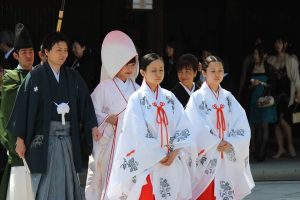
2. Guest at a Wedding
Of course, kimonos are also often worn by weddings guests to a Japanese wedding. Whether the wedding is traditionally Japanese or westernised, a kimono is still acceptable and appropriate to wear. Being a guest at a wedding is thought of as a great way to meet potential partners, and so it is common for young unmarried women to wear a brightly coloured kimono to attract a potential suitor. For married and older guests, it is more common to wear a darker and simpler kimono.
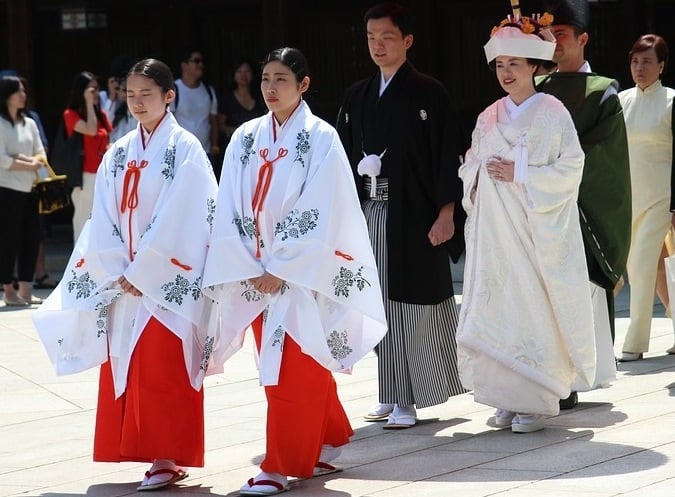
3. Graduation
Another special occasion that many like to wear a kimono to is a graduation ceremony. This is often paired with a Hakama, which is a skirt that is either divided or undivided. A hakama resembles a wide pair of trousers, and women often wear one with their graduation kimono to the official ceremony. A hakama possesses a scholarly image due to professors and lecturers traditionally wearing them. 
4. Coming of Age Ceremony
Coming of Age ceremonies (Seijin-Shiki) are held on every second Monday of January. This ceremony welcomes young adults to adulthood who turned 20 between April 2nd of the year before and April 1st of the current year. Kimonos can typically be seen in Japan on this day. For this occasion, girls tend to wear furisode, which are kimonos with long-flowing sleeves. Boys tend to wear haori, which are half coats, and then a hakama decorated with their family crest. Most families in Japan have their own crest or ‘kamon’. The tradition has been around for many years; it’s believed that adding the crest to garments makes them appear more formal. 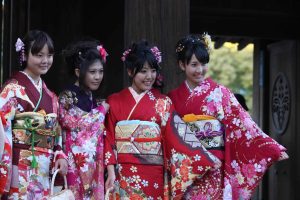
5. Summer festivals
Japan is famous for its array of festivals in the summer. From small to large, people love to appreciate the Japanese summer at special events with the people they love. Most young women tend to wear a summer kimono, known as a yukata, to these festivals. The yukata is more informal and makes the perfect kimono for Japanese festivals, especially in summer. This is due to the yukata’s lightweight material, helping the wearer to maintain a cool temperature. The wide sleeves are also great for keeping cool whilst providing a chic and summery look for those summer festivals. 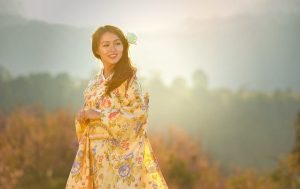
6. Attending a Funeral
When it comes to Japanese funerals, garments need to be understated and black. This has been the tradition for many years, so most people still follow that by wearing a formal, black kimono. However, there is also a special type of funeral kimono known as the ‘mofuku’ – this formal kimono is usually finished with a family crest. The mofuku is only worn to the funerals of close relatives and friends. Another important difference between funeral kimonos and traditional kimonos is that the right side of the kimono is crossed over the left. On any other occasion, it is thought to be bad luck to wear a kimono with the right side over the left.
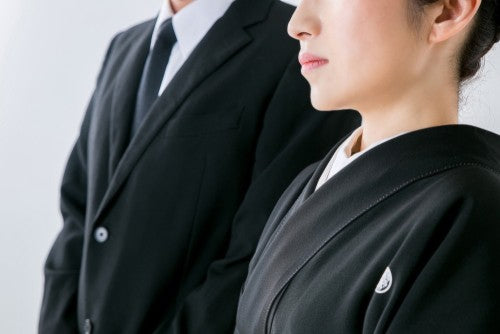
7. Participating in a Tea Ceremony
The Japanese Tea Ceremony is a cultural ceremony in Japan that is popular with its residents. The activity involves perfecting the art of preparing, serving, and appreciating tea. It’s important to wear the appropriate clothing to a tea ceremony. Traditionally, the appropriate attire for a tea ceremony is a simple kimono to avoid any distractions. However, modest western clothing is also accepted – but a kimono is most appreciated. The tea ceremony actually evolved during a time where the kimono was worn daily by all men and women. Because of this, many of the movements involved in making tea are actually accounted for in the design of the kimono. 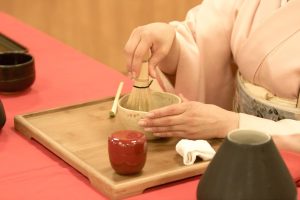
What is the difference between a Furisode and a Kimono?
The traditional kimono is arguably the most popular Japanese garment in western cultures, and it comes in various styles, patterns, and colours. However, there are many different kimono styles and the actual basis of the kimono is the robe itself. Another popular kimono for special occasions is a 'furisode' which translates to 'swinging sleeves’. While a furisode is technically a kimono, there are noticeable differences between a furisode and a traditional kimono. And, in Japan, it’s likely that guests wear the appropriate kimono depending on the event to show courtesy and propriety. 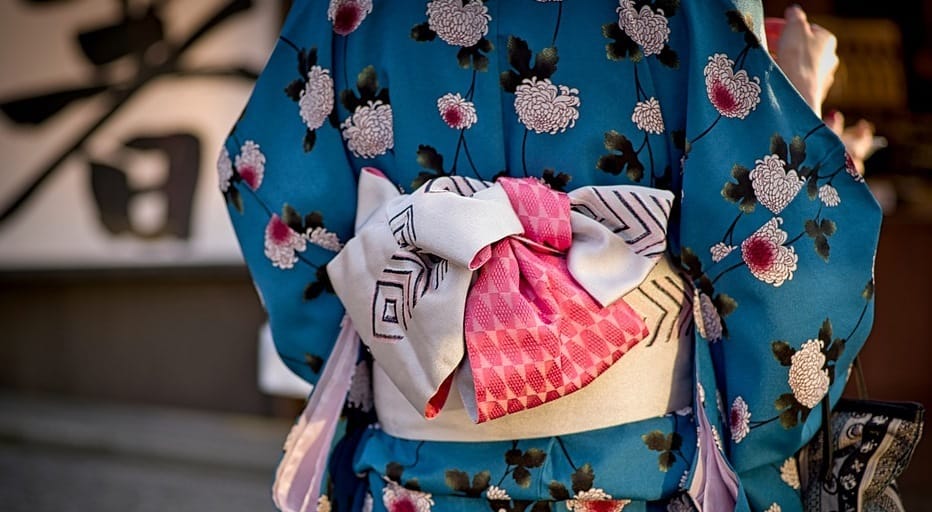 So furisode vs kimono, what are the key differences? Typically, the easiest way to spot a furisode is to take note of the sleeves - they're much longer and they hang loose! On the other hand, the traditional kimono has shorter sleeves that are attached to the bodice. Another prominent difference between the two is that furisode designs tend to be much brighter and bolder. Traditionally, young women wear furisodes to special occasions, for example, coming of ages rituals, weddings, and tea ceremonies. The standard kimono is usually reserved for married women attending formal occasions. Although the different kimonos are similar in style, they all have their own unique place in Japanese culture and customs. If you want to impress the locals with your kimono knowledge - head to our blog to find out the difference between a kimono and a yukata.
So furisode vs kimono, what are the key differences? Typically, the easiest way to spot a furisode is to take note of the sleeves - they're much longer and they hang loose! On the other hand, the traditional kimono has shorter sleeves that are attached to the bodice. Another prominent difference between the two is that furisode designs tend to be much brighter and bolder. Traditionally, young women wear furisodes to special occasions, for example, coming of ages rituals, weddings, and tea ceremonies. The standard kimono is usually reserved for married women attending formal occasions. Although the different kimonos are similar in style, they all have their own unique place in Japanese culture and customs. If you want to impress the locals with your kimono knowledge - head to our blog to find out the difference between a kimono and a yukata.

We hope you now have an idea of when it’s best to wear a kimono. Although we think they look great for any occasion! If you need any kimono inspiration, browse our large range of beautiful and authentic kimonos - perfect for many occasions! And, while you’re here, why not check out our range of Japanese gifts which includes unique Japanese style gifts for men and women.
